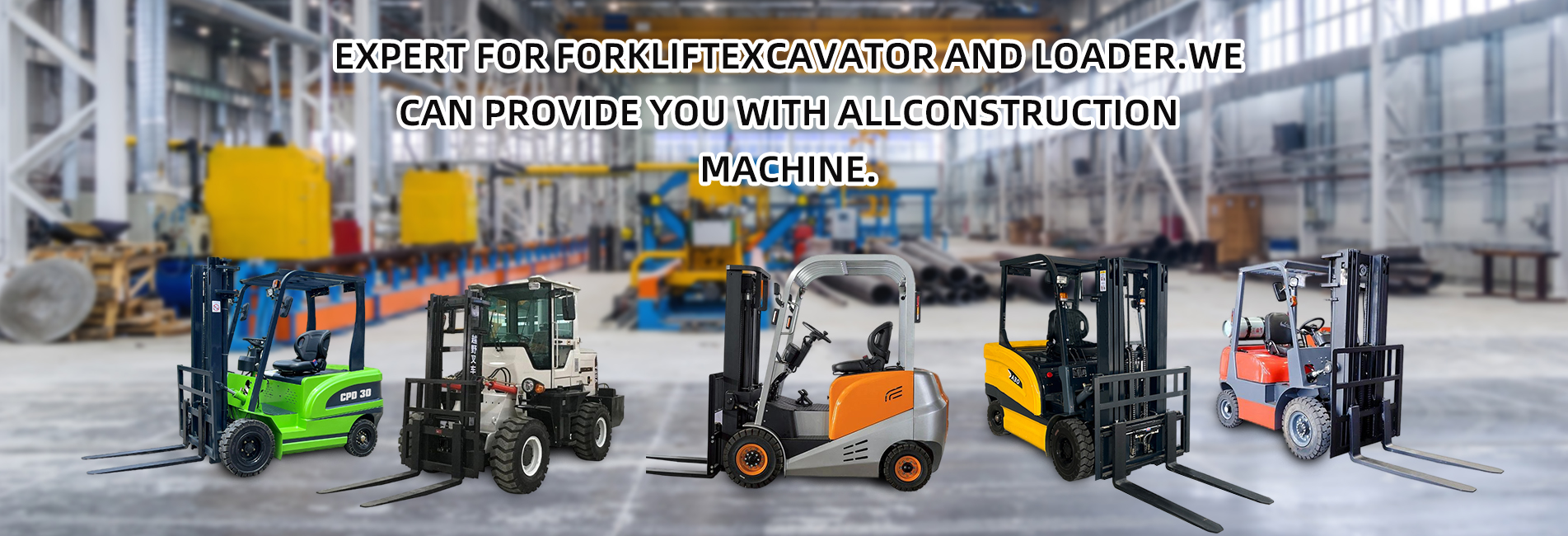The following is a detailed introduction to electric forklifts:

Working Principle
Electric forklifts use electricity as the power source. Most of them operate with storage batteries. Their working principle is to convert chemical energy into electrical energy, and drive the traveling motor and the motor of the hydraulic system to achieve traveling, loading, and unloading operations.
Electric forklifts use electricity as the power source. Most of them operate with storage batteries. Their working principle is to convert chemical energy into electrical energy, and drive the traveling motor and the motor of the hydraulic system to achieve traveling, loading, and unloading operations.
Types
- Counterbalance Electric Forklifts: These forklifts are equipped with a counterweight at the rear of the vehicle body to balance the weight of the goods on the forks. They have excellent stability and can be used for handling and stacking various goods. Their load - bearing capacity is generally around 1 to 5 tons.
- Reach Trucks: They feature a mast and forks that can move forward, enabling them to operate in small spaces. They are suitable for use in narrow aisles of warehouses and other similar environments. Their load capacity usually ranges from 1 to 2.5 tons.
- Electric Pallet Trucks: Mainly used for horizontal transportation of palletized goods, they have a simple structure and flexible operation. They are suitable for short - distance transportation on flat ground, with a load - bearing capacity generally between 1 and 2 tons.
- Electric Pallet Stackers: Used to stack goods to a certain height, they have lifting and stacking functions and can realize multi - layer stacking of goods in limited spaces. Their load capacity is generally 1 to 1.5 tons.
- Three - wheel Electric Forklifts: Supported by three wheels, they have a small turning radius and flexible operation, making them suitable for working in narrow spaces. Their load - bearing capacity is generally 1 to 3 tons.
Advantages
- Environmental Protection and Energy Conservation: Driven by electricity, they produce no exhaust emissions and have low noise, which is friendly to the environment and meets environmental protection requirements. In addition, they have high energy utilization efficiency, effectively reducing energy consumption.
- Easy to Operate: The electric steering system, acceleration control system, hydraulic control system, and braking system are all controlled by electrical signals. The operation is simple and flexible, greatly reducing the labor intensity of operators and improving work efficiency and accuracy.
- Low Maintenance Cost: With a relatively simple structure and fewer components, there is no need to replace engine oil, spark plugs, etc. Moreover, the high reliability of the electric system reduces the probability of failures, making maintenance more convenient and cost - effective.
- Superior Performance: The development of electronic control technology has significantly improved the performance of electric forklifts. They have good acceleration performance and climbing ability, meeting the needs of different working scenarios.
Application Scenarios
- Warehouse Logistics: Used for handling, stacking, and storing goods in warehouses, they can improve the utilization rate of warehouse space and the turnover efficiency of goods.
- Manufacturing Industry: Employed for handling raw materials, semi - finished products, and finished products in industries such as automotive manufacturing and electronics manufacturing, and can cooperate with production lines to achieve automated material distribution.
- Logistics and Distribution: In e - commerce logistics and express delivery distribution centers, they are used for loading, unloading, and short - distance transportation of goods, improving logistics and distribution efficiency.
- Other Industries: In industries such as food, pharmaceuticals, and chemicals, which have strict hygiene and safety requirements for the handling and storage of goods, the pollution - free and spark - free characteristics of electric forklifts make them ideal handling equipment.
Purchase Considerations
- Load - bearing Capacity: select a forklift with a rated load - bearing capacity greater than the maximum load requirement according to the actual weight of the goods to be handled, ensuring safety and efficiency.
- Working Environment: Consider factors such as indoor or outdoor operation and ground conditions. For indoor operations, compact forklifts can be selected, while for outdoor or uneven ground, more durable and powerful models are required.
- Battery Life: Understand the battery life and charging time of the forklift, and choose a product that can meet the working duration requirements. If necessary, consider spare batteries or fast - charging options.
- Brand and Quality: Choose well - known brands to ensure the durability, performance, and after - sales service of the product. Famous brands usually offer more reliable quality and better maintenance guarantees.
- Maintenance and Service: Give priority to models that are easy to maintain, and ensure that the supplier can provide comprehensive maintenance services to reduce maintenance costs and downtime.


